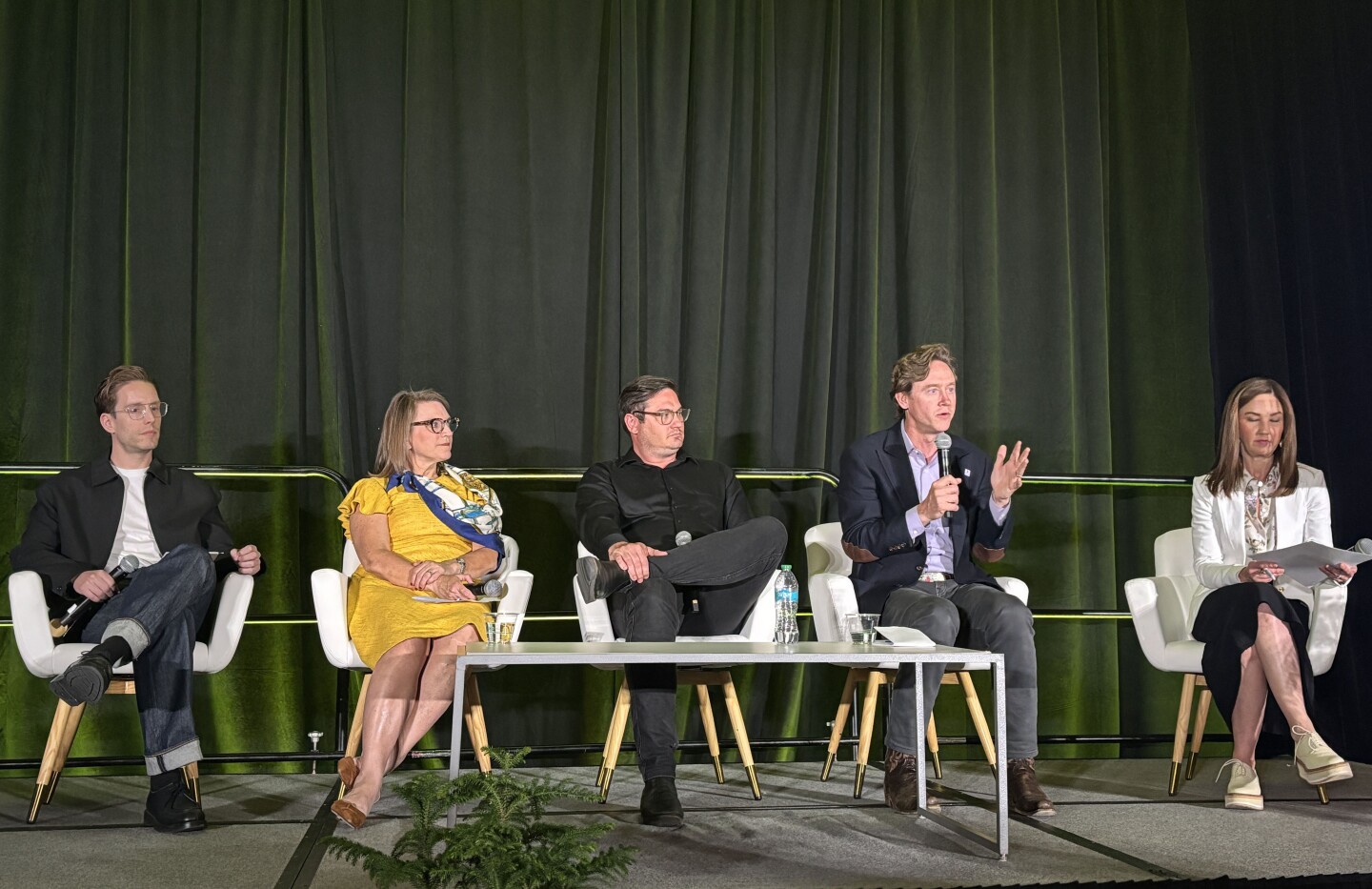As it contends with the same post-pandemic challenges that confront other urban cores nationwide, downtown Denver is leveraging public/private partnerships to bring back vitality. At the ULI 2025 Spring Meeting in Denver, Colorado, five leaders involved with the city’s revitalization shared recent successes and plans for Denver’s future.
“We’re in a really good place,” said Kourtny Garrett, president and chief executive officer of Denver’s Downtown Partnership. Despite a 27 percent office vacancy rate—a historic high for Denver—Garrett remains optimistic: “With the right vision, the right alignment, and public/private partnerships, [there] truly is an opportunity to do some cool, and new, and different things in our city.” She cited recent increases in downtown foot traffic, which has recovered to 81 percent of pre-pandemic foot traffic, with evening and weekend activity particularly strong.
“Denver is going to be the best city in America to do business,” said Mayor Mike Johnston, whose administration is focusing on five key areas: homelessness, public safety, placemaking, public investment, and streamlined government processes.
On homelessness, Johnston reported remarkable progress: “We have now moved more than 2,500 people off the streets and into housing. We have dropped our family homelessness in this city by 83 percent, we have ended veteran homelessness, and we will, by the time this year is over, achieve almost a 50 percent reduction in our total homeless population.”
Public safety initiatives have yielded significant results, as well, including a new downtown-dedicated police unit with officers on foot, bicycles, motorcycles, and horseback. “Denver has had a 58 percent drop in the homicide rate from last year to this year,” Johnston said. “That is the largest drop of any of the 50 major cities in the country over the last year.”
The recent 16th Street Mall revitalization represents a crucial placemaking effort. “You’ll see that [location] reopen in its entirety in the next two weeks,” Johnston said. He added that blocks already reopened in the last several months have experienced “100 to 200 percent increases in revenue and three times more leasing requests than we’ve seen in the last several years combined.”
Supporting these initiatives is a massive $570 million tax increment financing package, through an expansion of Denver’s Downtown Development Authority, approved by voters and the city council last year. This public investment will help convert commercial buildings to residential use, create public spaces and parks, attract and retain vendors, and develop needed amenities such as childcare facilities, Johnston said.
Johnston also highlighted dramatic improvements in permitting processes: “That 18-month permit [process] to open a restaurant now takes two weeks,” he said. “Also, for every project in the city, from development plan through permitting, we made a public commitment that we will get you through that entire process in 180 days—[which] used to be a two- or three-year-long process—and if we don’t, we pay you back $10,000 of the permitting fees that you paid to start the project.”
Joshua Brooks, principal at Sasaki, has been working on the new Denver Downtown Area Plan. He noted that, historically, downtown Denver’s economy relied on visitors and office workers. “When the pandemic hit, those two industries, in particular, took a huge hit, and it really hurt downtown,” he said. The prospect of remaking the central business district into a “central neighborhood district . . . is an incredible opportunity for us to focus on quality of life, residential density—all those things that drive foot traffic,” he said.
The new downtown area plan concentrates on creating what Brooks called “strategic corridors” and “catalytic nodes” that build upon 16th Street’s success: “How can we concentrate public space investment next to incredible adaptive reuse? How can we subsidize the ground floor to be active, so that we’re creating pockets of investment that end up having a catalytic effect on the downtown?”
Luis Mendoza, head of North America for DNCO, an international place-branding agency leading the repositioning of Denver’s 16th Street Mall, said that the rebranding effort goes beyond creating a new logo: “This was about providing a story that signaled a new era for the street, and for the city, that expressed all of the investment that came before we were even involved. Places are in competition with each other, but they’re also in competition with Netflix. So, how do you bring people here? How do you tell them a story that is going to engage them and excite them?”
Amy Hansen, shareholder and real estate lawyer at Polsinelli, pointed to the redevelopment of Denver Union Station as a successful model of public/private partnership, involving “tax increment financing, Downtown Development Authority dollars, federal transit dollars, and a whole lot of private investment,” she said. “That really took vision.”
She emphasized the importance of the expanded Downtown Development Authority: “It’s an incredible opportunity to take 500 [million] to 600 million dollars and invest it, pair it up with private dollars, [and put it] back into our downtown.”



![IMG_2896[1].JPG](https://cdn-ul.uli.org/dims4/default/a6f9030/2147483647/strip/true/crop/4032x2266+0+7/resize/500x281!/quality/90/?url=https%3A%2F%2Fk2-prod-uli.s3.us-east-1.amazonaws.com%2Fbrightspot%2F80%2F39%2F205699104776b5d89f410b5cd438%2Fimg-28961.JPG)
![IMG_9889[1].JPG](https://cdn-ul.uli.org/dims4/default/cffa1ef/2147483647/strip/true/crop/5712x3210+0+537/resize/500x281!/quality/90/?url=https%3A%2F%2Fk2-prod-uli.s3.us-east-1.amazonaws.com%2Fbrightspot%2F44%2F9f%2F1ad4a6684815aa39dacc30bf931a%2Fimg-98891.JPG)
